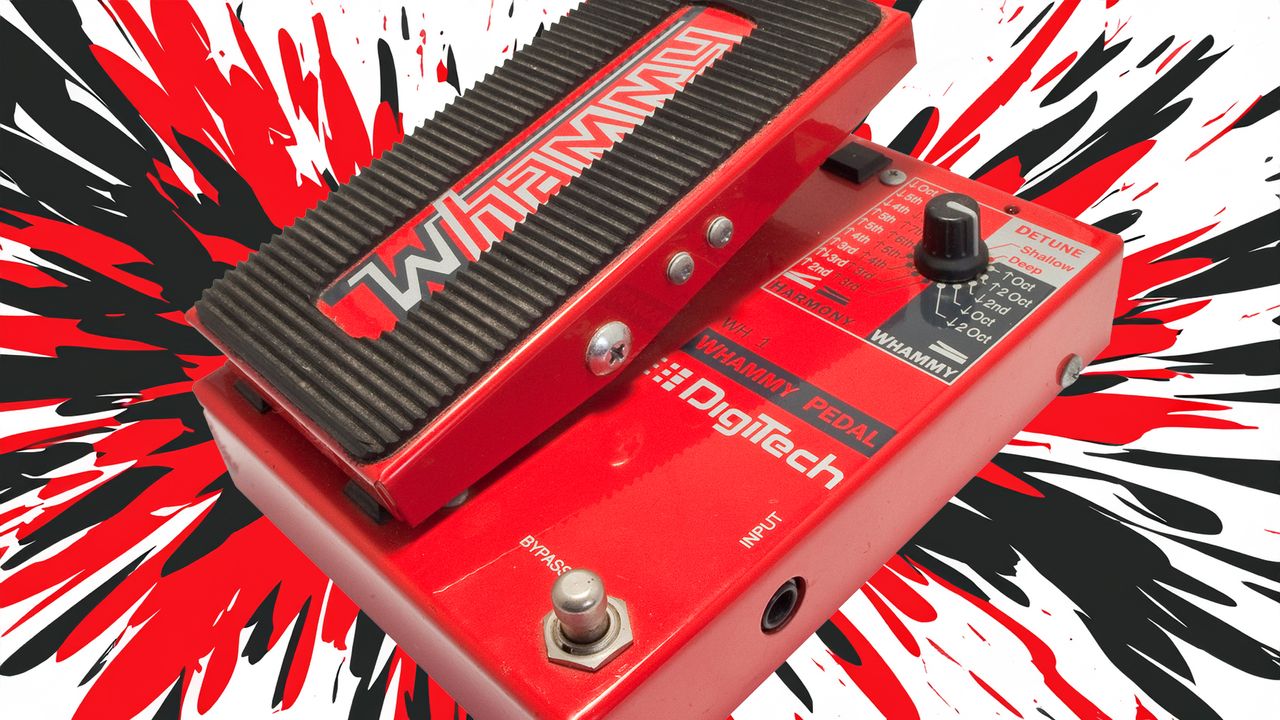
The original DigiTech Whammy pedal is a great example of thinking outside of the box, literally. It all started when DigiTech introduced the IPS33 Smart Shift Intelligent Pitch Shifter rack-mount processor – an affordable alternative to Eventide’s Harmonizer processors – during the late ’80s.
When a few enterprising programmers used a MIDI expression pedal to sweep pitch shifting parameters via MIDI Control Change commands, they discovered that the unit could create some very musically useful effects. The problem was it required some effort and an extra investment in external MIDI controllers to program and access those effects.
DigiTech’s ingenious solution was to take its IPS technology and put it inside an expression pedal with a bunch of presets pre-programmed for us luddites otherwise known as guitarists.
The design couldn’t be any simpler: a rotary switch for selecting any one of the nine Harmony, two Detune (chorus-style) or five Whammy presets, an effect on/off Bypass footswitch and a variable wah-style foot treadle. In addition to its mono input and Wet Added output, it also provided a Dry Out jack.
The Harmony presets are set to a 50/50 dry/wet mix, keeping the original note and processed harmonized note in balance. One of the more popular Harmony presets is the 5th to 6th setting, which can emulate pedal steel bends.
The Detune presets go from dry (treadle toe up) to wet (treadle toe down), and the detuned signal is processed with modulation to enhance the chorus-like textures. The Whammy presets are 100 percent wet and provide 2nd down and 1- or 2-octave up or down settings.
The pitch-shifting processing in the original WH-1 is primitive by today’s standards and prone to glitching and some rather unusual audio artifacts, but many players consider that a feature and not a bug.
Indeed, the octave-up guitar sound of Radiohead’s My Iron Lung doesn’t hit the same way when using a modern pitch shifter pedal with pristine sound quality. The 2-octave up Whammy preset can have a gnarly animalistic quality, a perfect example being Dimebag Darrell’s Whammy-fied harmonic squeals on Becoming.
The Detune presets sound particularly lush and organic thanks to the unpredictable wavering, whereas the pristine detune shifting of a modern processor can sound cold and clinical in comparison.
One major inconvenience of the WH-1 is that it requires a 9.75-volt AC power supply, so it either needs to be used with its stock wall-wart adapter or a pro-quality power supply with a VAC output like the Truetone 1 Spot Pro CS12.
Despite the improvements made to several subsequent versions of the Whammy pedal (including the current Whammy 5, DT Drop Tune, and various specialized offshoots like the HammerOn and Drop), many pros still prefer the original WH-1, which is why they command top dollar on the used market.
Tom Morello, whose extensive use of the Whammy on his solos on the early Rage Against the Machine albums probably sold more units than every other early adopter combined, still prefers his WH-1, as does the Edge of U2, who is known to hoard them.
Other prominent WH-1 users have included Billy Corgan, David Gilmour, Kirk Hammett and James Hetfield of Metallica, Scott LePage, Jimmy Page, Joe Satriani, Kevin Shields and Steve Vai.
- This article first appeared in Guitar World. Subscribe and save.







